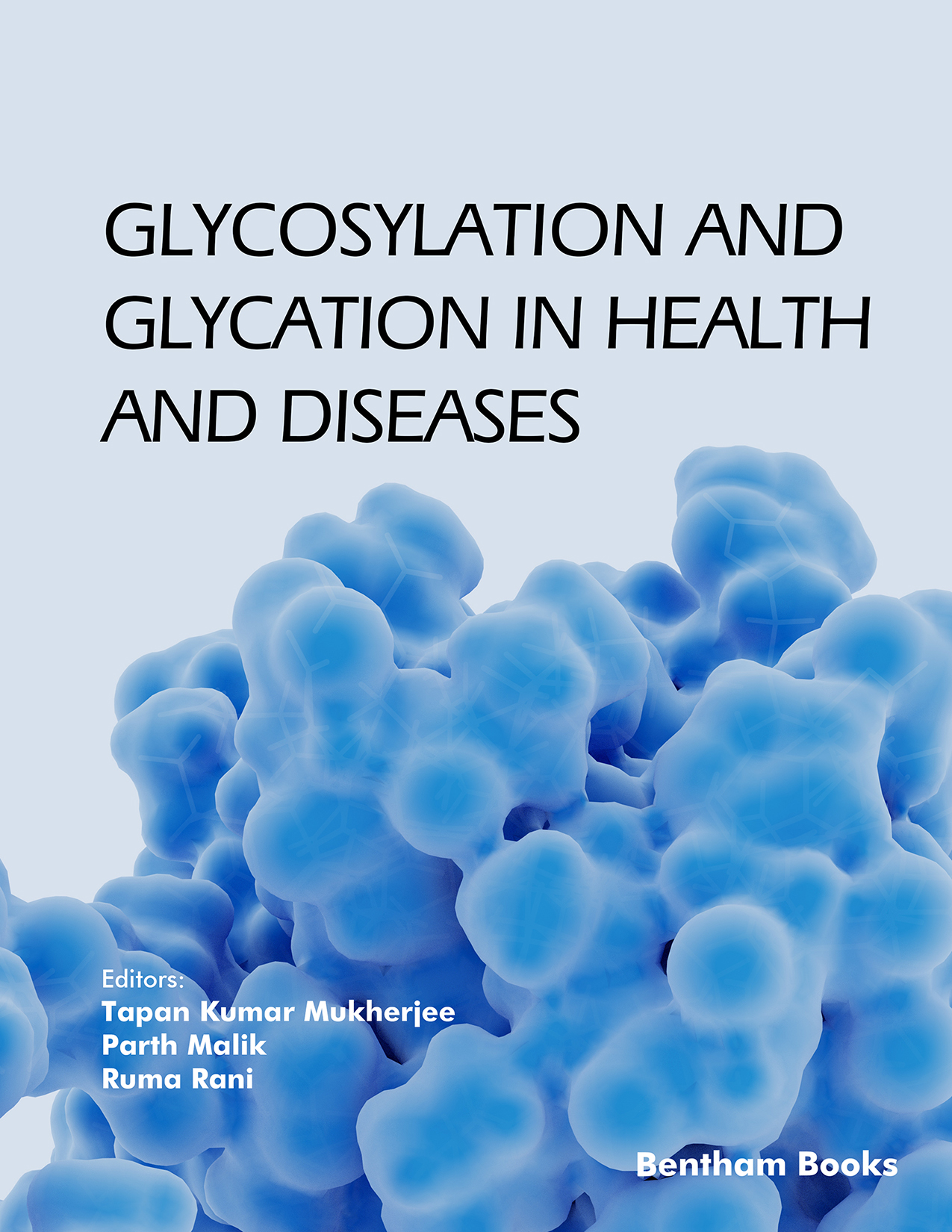The book titled, “Glycosylation and Glycation in Health and Diseases” is hereby planned to be completed in 10 chapters. While glycosylation is a physiological process engrossing glycoprotein and glycolipid synthesis via enzyme-assisted carbohydrates’ addition to proteins and lipids respectively; glycation is a pathophysiological process where excess carbohydrates are added to the proteins via biochemical reactions without the involvement of any enzymes.
The book commences with an introductory chapter describing various aspects of glycosylation. Subsequently, each chapter is dedicated to the biological roles of glycosylated molecules and various aspects of congenital disorders associated with glycosylation, respectively. In the domain of glycation, one chapter describes the generation of advanced glycation end products (AGEs) and their effects on various mammalian life-sustaining events. Subsequently, five chapters illustrate the pathophysiological effects of the receptor for advanced glycation end products (RAGE) on various organs, about health concerns. Finally, one chapter is dedicated to the pro-inflammatory and pro-oxidative mechanisms through which RAGE complicates various diseased conditions. Thereby, the mechanistic and pathophysiological aspects of both glycosylation and glycation are comprehensively attempted for the first time, in this book.
The study of glycans or carbohydrates has emerged as a necessity for the undergraduate and graduate syllabi of various Life Sciences related subjects, including cell biology, biochemistry, molecular biology, biotechnology, microbiology, immunology (host-pathogen interaction), and others. The fundamental biomolecular aspects have therein propelled glycation and glycosylation as major research themes in the biopharmaceutical and biotechnological industry including new drug discoveries against various cancers. Considering the prominent functions of glycans vis-à-vis immune interactions, conjugated carbohydrates are being promptly screened as next-generation therapeutics, vaccines, and diagnostic augmenters.
Closing in on the footmarks of glycosylation, the study of glycation has swiftly emerged as an essential aspect of current research, considering the awareness of physical stress as a deteriorating health feature in developed and developing economies. The biology of glycation is one of the most evolving areas of present-day “Molecular Medicine” research. It is now widely accepted that the interaction of AGEs with
RAGE enhances inflammatory and oxidative stress. This enhanced level of inflammation and oxidative stress propagates various non-communicable disorders, including diabetes, cardiovascular, pulmonary, and vascular complications, associated with major organs, viz. kidney, liver, pancreas, and nervous system. At present, the glycated haemoglobin i.e. HBA1c in the RBC is recognized as a decisive hallmark of diabetes, being in regular use for diagnosis. Finally, AGE-RAGE interaction aggravated extents of inflammation and oxidative stress complicates various cancers. Thus, studies probing the therapeutic usefulness of anti-AGE/anti-RAGE molecules against senescence and aging are being conducted with increasing reliability. Concerning this, every year thousands of manuscripts are published on “Glycosylation and Glycation”, across the globe. Essentially, not only the students and teachers but also the glycobiology researchers too, would substantially benefit from this book, which in due course, would cement its place in many libraries as well as laboratories.
Tapan Kumar Mukherjee
Department of Biotechnology
Amity University, New Town, Kolkata
West Bengal
700156, India
Parth Malik
School of Chemical Sciences
Central University of Gujarat Gandhinagar
Gujarat-382030, India
&
Ruma Rani
ICAR-National Research Centre on Equines
Hisar-125001, Haryana, India

